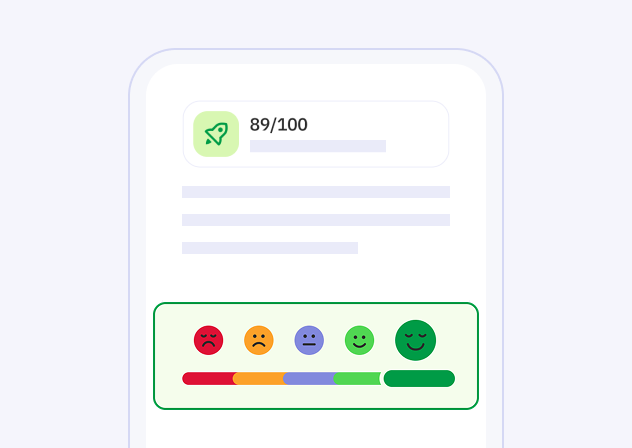Spoken Italian Practice With AI
Unlock the full potential of learning Italian with targeted spoken Italian practice. Whether you are a beginner eager to dive into learning a new language or an advanced learner aiming to polish your speaking skills, practicing spoken Italian is crucial. In today’s digital age, numerous resources are available to aid learners, including innovative tools like Talkpal AI, which simulate real-life conversations and provide immediate feedback. This post will explore ten key areas to focus on for effective spoken Italian practice, ensuring you can speak Italian fluently and confidently.

The most efficient way to learn a language
Try Talkpal for freeMastering Spoken Italian Practice: Enhance Your Language Skills
1. Embrace Interactive Learning Technologies
Incorporating modern technology into your language learning process can significantly boost your spoken Italian practice. Tools like Talkpal AI are designed to replicate real conversational environments, providing an immersive experience. This AI-powered platform listens to your pronunciation, suggests improvements, and personalizes the conversation based on your learning speed and style. By engaging with such technologies, you’re not just practicing the language; you’re actively participating in a dynamic learning process that mimics real-life interactions.
2. Focus on Pronunciation
One of the most crucial aspects of spoken Italian practice is mastering the pronunciation. Italian is known for its melodic and expressive pronunciation, which can be challenging for non-native speakers. Regularly practicing with native speakers or utilizing speech recognition technology can help you understand the nuances of Italian pronunciation. Pay attention to the stresses and rhythmic flow of the language, as these are essential in sounding authentic.
3. Engage in Regular Conversation
The key to mastering any language is regular practice. Engage in spoken Italian practice as frequently as possible by joining language meetup groups, conversational classes, or online language exchange platforms where you can converse with native speakers. This will not only boost your language skills but also build your confidence in speaking Italian in various social contexts.
4. Expand Your Vocabulary
To speak Italian fluently, you need a broad vocabulary. Use flashcards, mobile apps, and language games to learn new words and phrases regularly. Contextual learning is essential, so try to learn words in phrases or sentences to understand how they are used in everyday conversation. More vocabulary will enable more dynamic and expressive communication during your spoken Italian practice.
5. Listen and Learn
Listening to native speakers is invaluable in learning the correct intonation and pronunciation. Utilize Italian podcasts, songs, movies, and series to immerse yourself in the language. This approach not only improves your listening skills but also helps you pick up conversational language and slang, making your spoken Italian practice more contemporary and relevant.
6. Use it or Lose it
Practice makes perfect, especially when it comes to language learning. Make a habit of using Italian in your daily life, whether ordering coffee at an Italian café or writing down your shopping list in Italian. The more you use the language, the more natural it becomes, facilitating easier and more effective communication.
7. Participate in Role-Plays
Role-playing different scenarios can be a fun and effective way to practice spoken Italian. Simulate situations such as booking a hotel, ordering food, or asking for directions in Italian. This kind of practice can prepare you for real-life interactions and boost your speaking confidence.
8. Record and Review
Recording your spoken Italian during practice sessions can provide insights into your pronunciation and language use. It allows you to self-assess and identify areas for improvement. Reviewing your recordings with a teacher or a native speaker can also offer valuable feedback that can enhance your spoken proficiency.
9. Incorporate Grammar Practice
While focusing on spoken Italian practice, do not overlook the importance of grammar. A solid grasp of Italian grammar helps in constructing clear and correct sentences when speaking. Balance your practice sessions between conversational skills and grammatical accuracy for well-rounded language learning.
10. Stay Persistent and Motivated
Lastly, maintaining your motivation throughout the language learning process is vital. Set realistic goals, celebrate small victories, and keep your end objectives in mind. Whether it’s being able to speak fluently with Italian relatives or to live in Italy, motivation will keep your learning journey on track and make spoken Italian practice a rewarding part of your everyday routine.
By focusing on these elements, learners can effectively improve their spoken Italian, making the process both effective and enjoyable. With consistent practice and the right tools, achieving fluency in Italian is an attainable and fulfilling goal.
The most efficient way to learn a language
Try Talkpal for freeFrequently Asked Questions
How long does it typically take to become proficient in spoken Italian?
Can I really improve my Italian speaking skills using apps like Talkpal AI?
Is it necessary to visit Italy to become fluent in Italian?
What are the best practices for incorporating spoken Italian practice into a busy schedule?
How can I assess my progress in spoken Italian?
The talkpal difference

Immersive conversations
Each individual learns in a unique way. With Talkpal technology, we have the ability to examine how millions of people learn simultaneously and design the most efficient educational platforms, which can be customized for each student.

Real-time feedback
Receive immediate, personalized feedback and suggestions to accelerate your language mastery.

Personalization
Learn via methods tailored to your unique style and pace, ensuring a personalized and effective journey to fluency.







